From Software’s Bloodborne is different. It’s a spooky game, for sure, but it’s not a horror game. It is, however, one of the best games based on Lovecraft’s works in the market, because it truly places you in the shoes of one of his protagonists, slowly carving away at the mysteries of the world until you find something truly dark and disturbing. Intrigued, you’ll go a little deeper, and by the time you realize what you’re doing, it’s too late—you’re past the point of no return. You either continue head-first or stop and let madness overwhelm you.
Unspeakable Obstacles and the Feeling of Triumph
Playing Bloodborne is a lot like discovering some horrible truth. At first, it’s off-putting—you’ll die, make some progress, then die again. But as you overcome each obstacle, you’ll get this feeling that you’re ten feet tall, that the world shouldn’t dare take a stab at you. Then, the world will take a stab at you. And it will hit a jugular. And you will die. Again.
This is the life and soul of Bloodborne: encountering unbelievable obstacles and overcoming them with your cunning, wit, and skill. The first area of the game, Central Yharnam, is essentially one giant tutorial on how to deal with the game’s difficulty. Many players will not get past this point, and that’s OK—that’s the nature of the game.
The first two bosses are insanely difficult. Cleric Beast, a large werewolf-like enemy that ambushes you on a bridge, fills up the entire camera and can kill you in just a few swipes. Father Gascoigne, a fellow hunter like you, constantly jumps in and out of your reach with aggressive quick attacks. Oh, and he turns into a beast in the middle of the fight, granting a huge boost to his speed, damage, and defense.
As you fight these bosses, the game will begin drilling its mechanics into your head. Don’t hang back and watch the boss for an opening—he’ll leap at you and crush you with his fists. If the enemy is your size, even if it’s a boss, its attacks can be parried with your firearm. Pay attention to the world around you; the music box you got from the little girl has Gascoigne’s name written on it. Maybe playing it would affect him in some way?
When you finally beat these bosses, that’s it: you’re in the know. You’re hooked. When I defeated Father Gascoigne, I was overwhelmed with a sense of accomplishment and pride. It was enough to keep me going for the rest of the game, and it made it difficult to put the controller down, even for necessary things like sleep. It reminded me of how I’d stay up all night trying to beat Castlevania as a kid, determined to make it to the next level and see what other challenges the game had in store.
Rewarding Aggression but Punishing Carelessness
Almost all of my deaths in Bloodborne were the result of extreme caution or mindless abandon. The combat of the game isn’t about blocking an enemy’s attacks and waiting for an opening. It’s about making an opening by leaping into the enemies swipes and dishing out some damage, or punishing the enemy’s own aggression by parrying attacks.
The mechanics support this design. The Raleigh system, for instance, allows you to regain some lost health by attacking an enemy immediately after getting hit. Visceral Attacks, the game’s critical hits, are set up by shooting an enemy with your gun right as they attack you to stun them. Yes, even Bloodborne’s parrying system is aggressive—there is no fancy shieldplay here.
Pulling off these maneuvers takes practice, timing, and skill, and the game expects you to master them. Whenever I encountered a boss and engaged in a roll-away-then-attack strategy (because, seriously, look at that thing why would I want to get close), it would wipe the floor with me. Each boss has a long-distance attack that will devastate most characters. Stay close, dodge into attacks, and slash away at the monstrosities to bring them down. Once I accepted this rule, I made eldritch abominations my bitch, which is a pretty unique, awesome feeling.
Don’t think you can just mash R1 to win, though. Your stamina meter determines how many actions you can make at any given time, including attacking, dodging, and sprinting. Keeping an eye on this meter is key—if it runs out while you’re up close and personal with an enemy, then prepare for a beating. The enemies all follow the same rules you do: move quickly, get up close, and attack relentlessly. You can stun-lock most enemies, but they will do the same in turn if you give them the opportunity.
Enemies know that they are outmatched against you. They will use every dirty trick in the book to gain the upperhand, including hiding around corners with weapons at the ready and shooting at you with cannons. Some enemies will appear weak as you approach, only to turn around and decide that your face would make a pretty good mop, given the proper amount of force. As a general rule, you should never enter a new area without first taking a close look at your surroundings—an enemy in hiding can take off a good chunk of your health, or worse, with ease.
This all mixes together into an intense but rewarding combat system. There is not a single encounter in this game that won’t get your heart racing, and every failure will only help you improve.
Exploration and the Descent into Madness
The first thing I noticed about Bloodborne was how huge Yharnam was. You can’t take five steps without coming to a crossroad, and even then, there is likely a third path hidden behind rubble. Exploring the entire city will take hours, but as you progress you’ll find dozens of shortcuts for next time. You’ll also find new weapons, items, and clues as you move about the world.
While the game has a linear, set path you must take to reach the end, it branches off constantly. One time, after I kept dying to a boss in the Cathedral Ward area, I decided to explore and discovered an entire level, complete with a new boss to worry about. Then, on my way up to the Cathedral Ward boss, I was killed by an enemy that took me to yet another level I hadn’t seen before, with another boss battle. None of these areas are required to beat the game, but after playing Destiny for so many hours it was refreshing to play a game that had actual secrets to uncover.
Of course, like most of Lovecraft’s stories, the more you learn about the world the darker it gets. Soon, you’ll find yourself battling bizarre, otherworldly creatures instead of werewolves, and as you gain Insight—a stat in the game tied to how much you’ve discovered—you’ll start to notice gargantuan monsters clinging to buildings, or hear enemies you thought were mindless talking among themselves.
You’ll discover secrets that lead to the game’s hidden final boss, or you’ll learn about old Great Ones (instead of great Old Ones—very clever, guys) and decide to hunt them down. Many players will miss these details their first time, which only makes your exploration that much more rewarding. You’re in the know. These other hunters are running around thinking that slashing a few beasts is the worst of their problems. Ha! If only they knew what you knew!
These secrets have spawned a community that has devoted hours into trying to figure out Bloodborne’s story. How did Yharnam get the way it is? How did the Hunter’s Dream come to pass? Some players won’t bother with these questions, and that’s fine—but those who seek out these answers will find some interesting rewards.
Living Aesthetic
Perhaps the strongest point of Bloodborne is its visual design. Every area has a distinct aesthetic—from sprawling, claustrophobic castles to dense, foggy woods. The enemies all have an intimidating, disgusting look about them, but you can learn a lot about them just by observing them; the villagers have tufts of hair growing on their faces as the beast plague takes over, and some bosses aren’t hostile until you take the first swing, hinting that they might be just as curious and terrified as you are.
What I’m saying is that Bloodborne has something that many AAA titles lack: personality. Every item in the game comes with a backstory tacked onto its item description. Every trick weapon has marks of wear and little details that indicate how they function. Each enemy has a distinct pattern and look: very rarely will you enter an area and think, “Ah, yes, here’s Generic Enemy Mk III. I know what to do here,” and when you do, it’s usually the game tricking you into letting your guard down.
Every building you explore appears lived-in. When you enter Byrgenworth College you can see how crazed scholars might desperately tear through its bookshelves for answers, or how they conducted experiments on animals and even people.
The streets of Yharnam all connect together in a way that makes sense. Another village, Yahar’gul, slowly becomes decrepit as you progress in the game, complete with corpses in strange positions littering the streets. It becomes clear that some force invaded the town and took it over while you weren’t looking.
Imperfection
Bloodborne, like all games, has its share of flaws. The game shipped with numerous game-ending bugs and inexcusably long loading times (all of which, at time of writing, appear to have been fixed). Warping from location to location requires first teleporting to the Hunter’s Dream, and then selecting where you’d like to go. Blood Vials and Quicksilver Bullets—the two most important items in the game—are finite, and must occasionally be farmed in between failed boss runs.
The multiplayer, while improved since the game’s release, barely works. Even when using the game’s private password system and coordinating with friends, finding other players can take upwards of 10 minutes. Because there is no indication as to whether or not other players are looking to connect, you could waste Insight ringing your summoning bell only to reach the boss without any bites.
PvP, while as fun and rewarding as PvE, is riddled with lag and connection issues as well. Indeed, having even one other player in your game could cause your framerate to plummet, though it never reaches unplayable levels.
While each weapon has a unique playstyle and design attached to it, there aren’t enough of them to choose from. Far too many players in PvP use the same weapons and builds because only two or three weapons are powerful enough to consistently wreck high-level players.
These design choices don’t undermine the game’s overall experience, but they do make me scratch my head. From Software has nailed multiplayer and character variety in the past with Dark Souls II. It’s baffling that they would change a system that functioned so well before.
Conclusion
Bloodborne is the best AAA game I’ve played in the past five years, and it is definitely the best game on current-gen consoles by a considerable margin. You may think that’s a drastic claim, but when you really boil it down, what other AAA titles—especially on PS4 and Xbox One—have lived up to expectations like this game has? If you own a PS4 and do not have this game, you are doing yourself a great disservice by letting it slip by.
I’m serious. This isn’t one of those, “well if you like this game or hate this game…” moments. If you play Bloodborne, even if you hate it, you’ll come out with a memorable experience the likes of which AAA gaming hasn’t known for far too long.
Don’t waste another moment. Grab the most dapper hat you own (no, not your fedora, you put that down right now or so help me), don it, and join the nightly hunt!
Bloodborne is the selection for the April 2015 “Not Crowdfunded, But…” series. You can read more Bloodborne articles here.
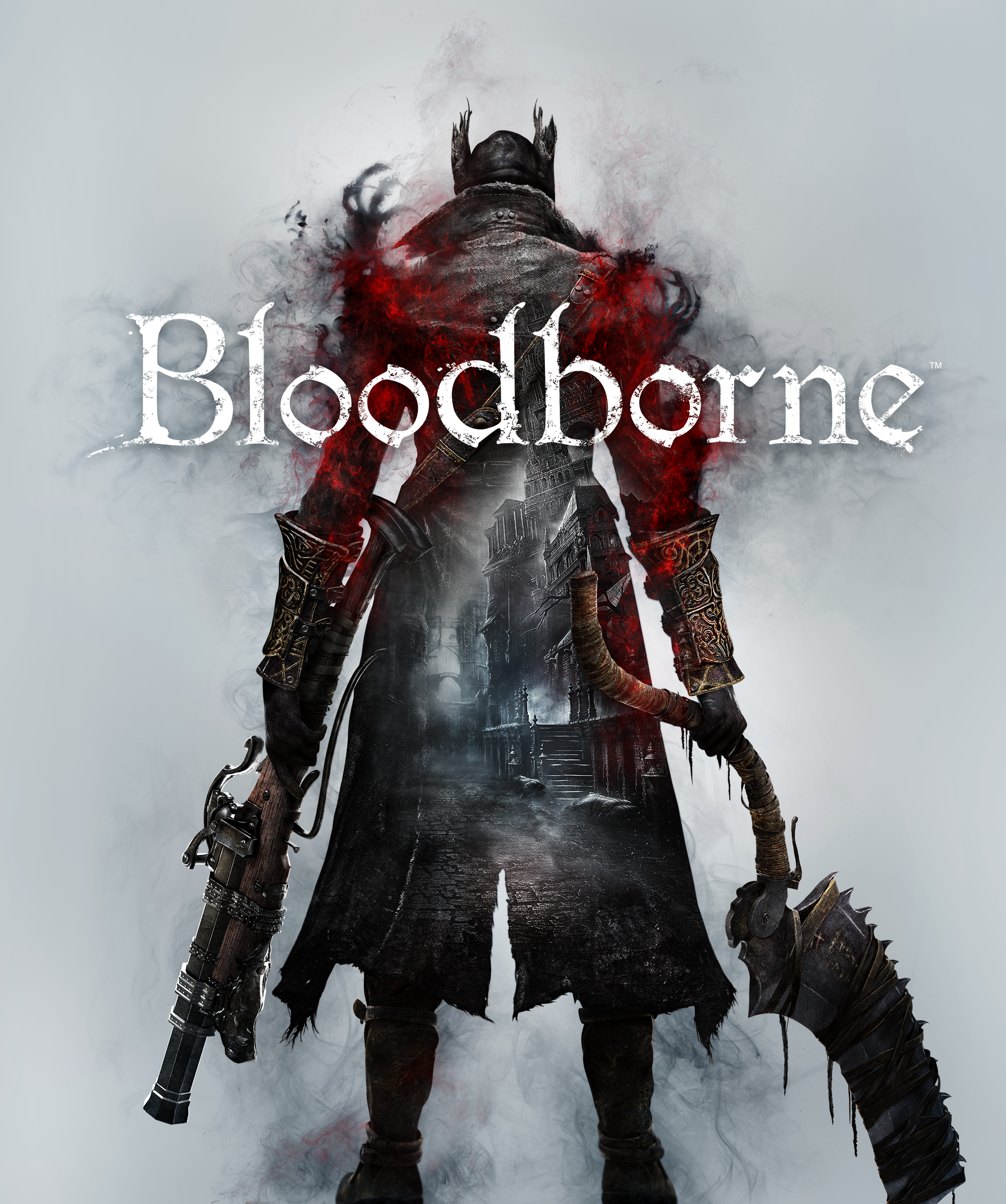
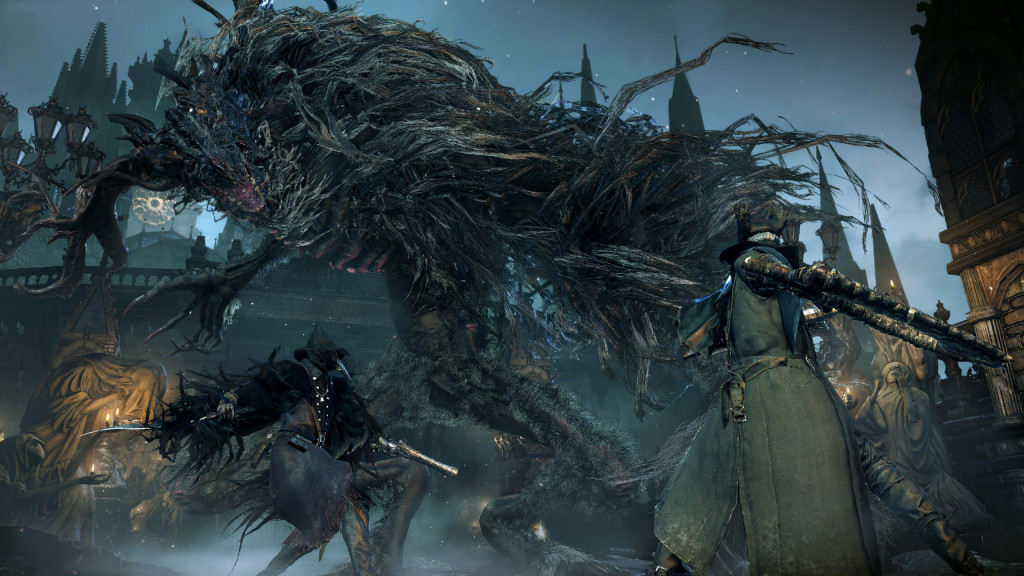
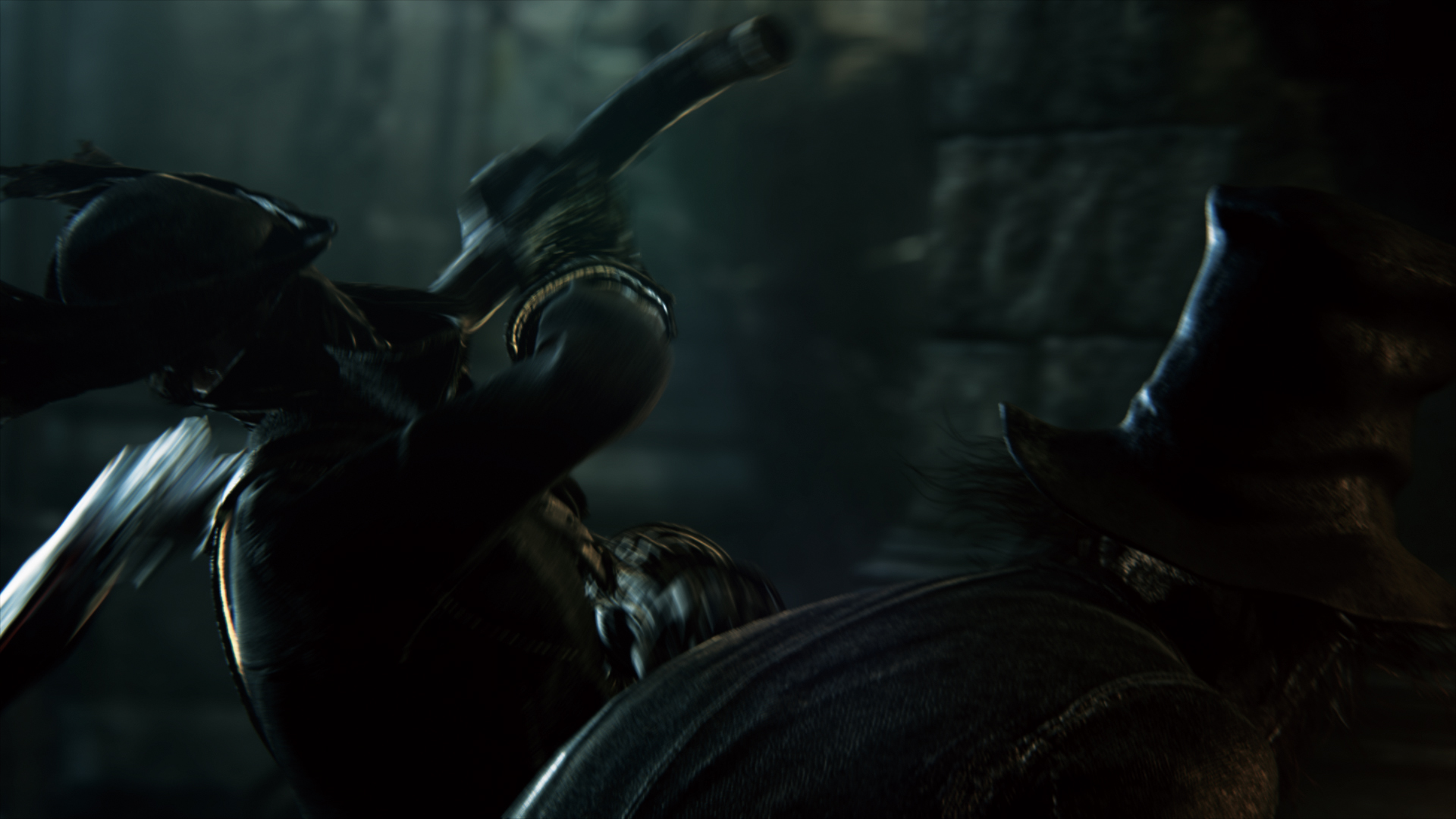
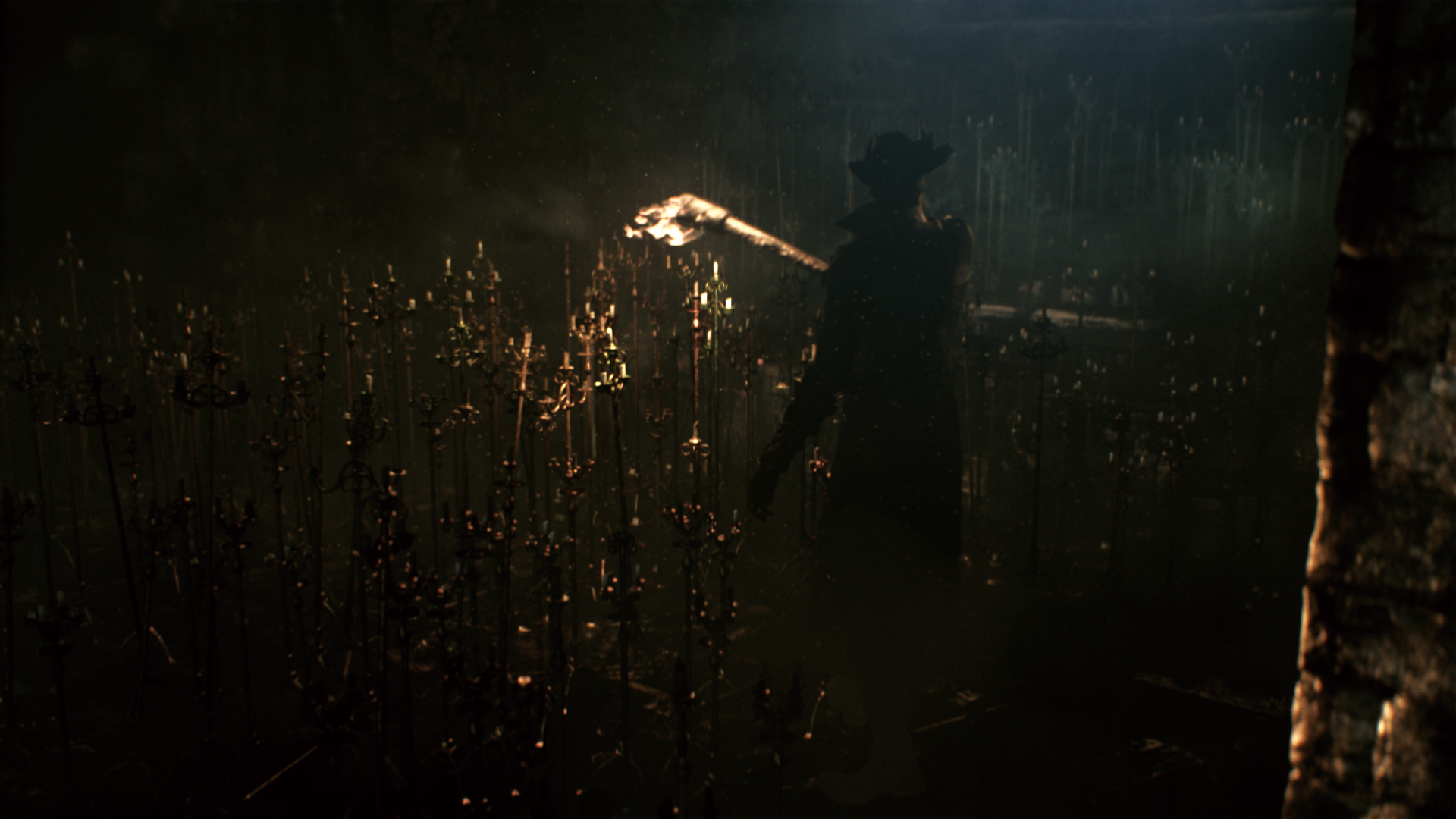
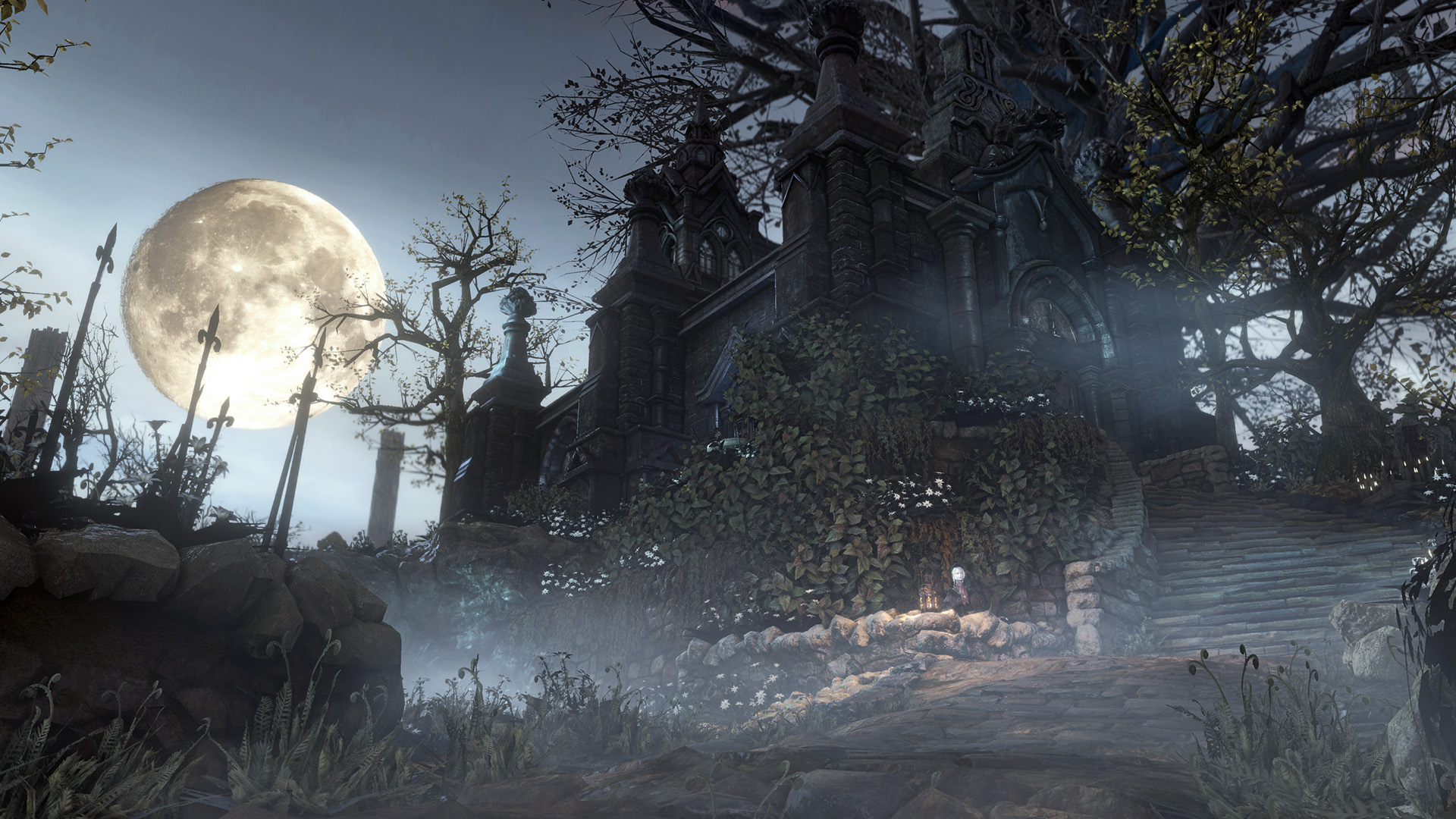
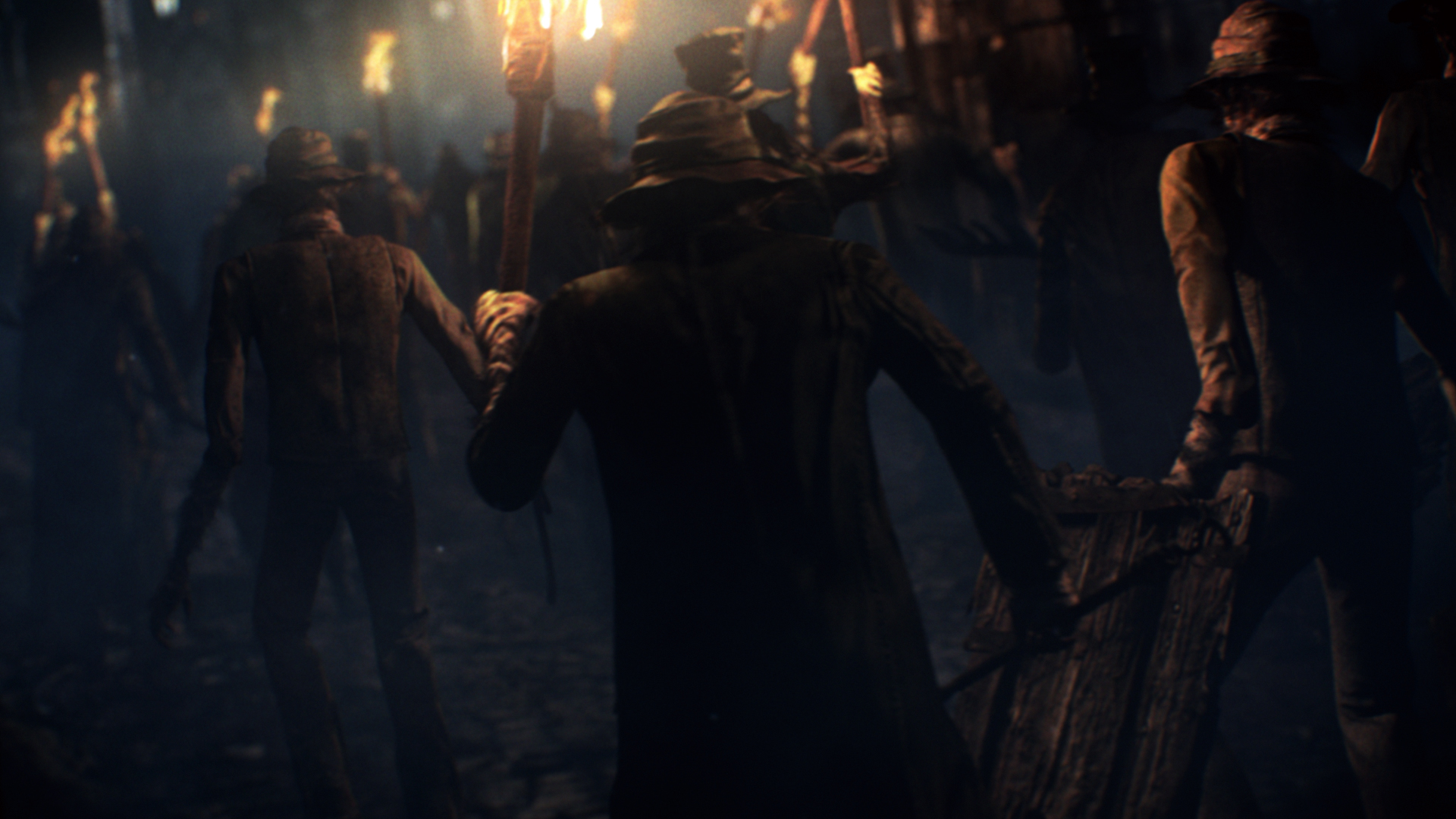
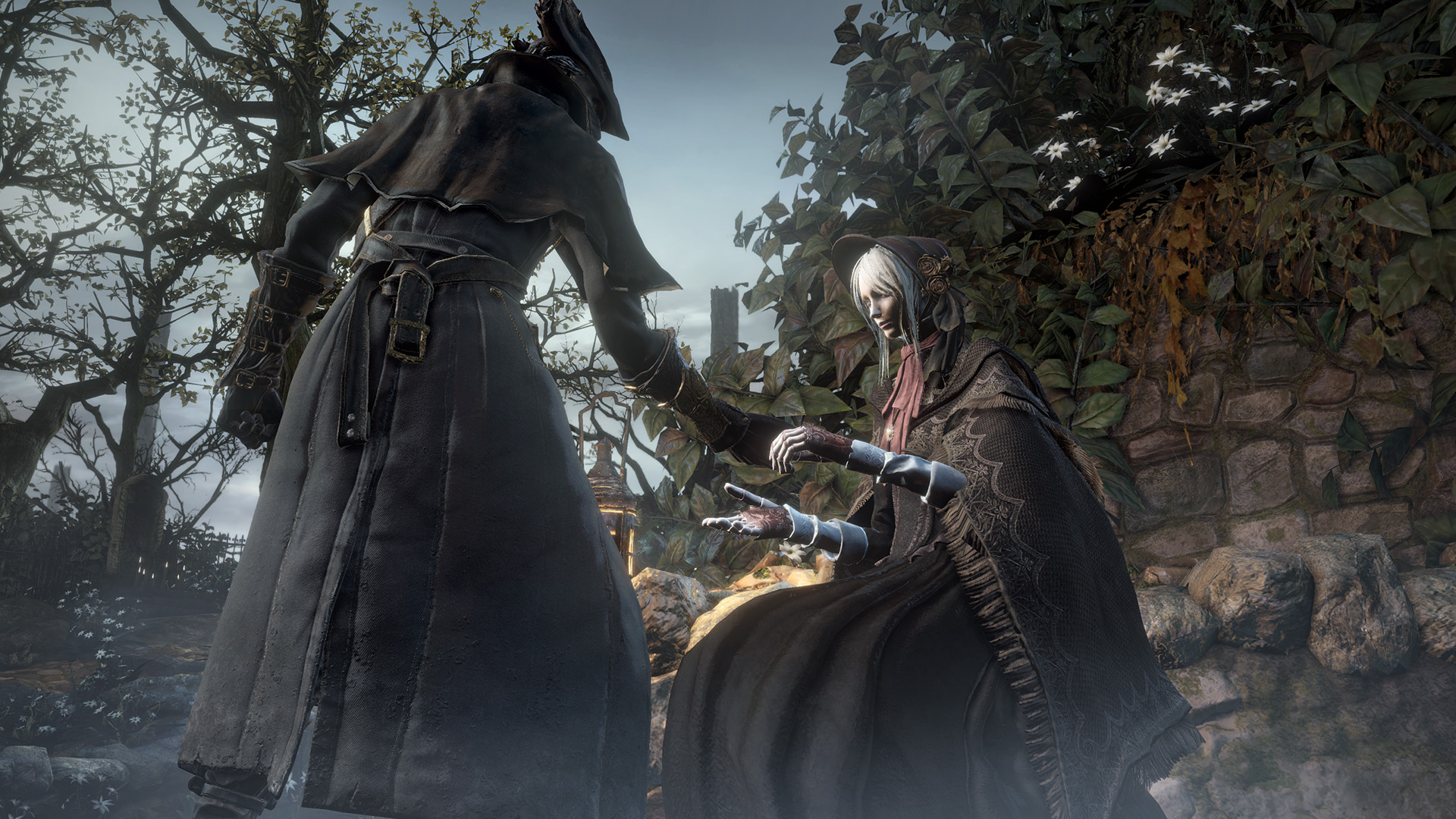



[…] 4/29 – Bathed in Blood – Bloodborne Reviewed […]